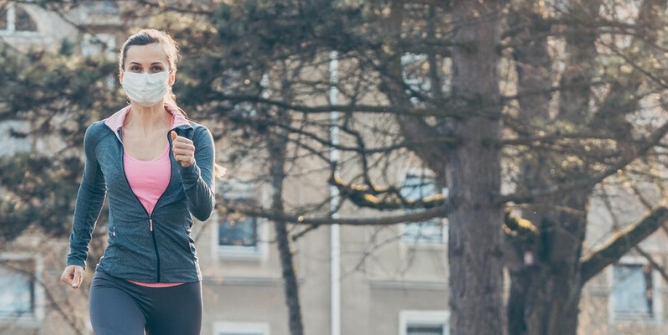
Visiting Parks and Recreational Facilities – Protect Yourself and Others From COVID-19
Parks and beaches are reopening in some states. The CDC has recommendations to follow if you choose to visit these recreational facilities.
Staying physically active is one of the best ways to keep your mind and body healthy. In many areas, people can visit parks, trails and open spaces as a way to relieve stress, get some fresh air and vitamin D, stay active, and safely connect with others.
Know before you go
While these facilities and areas can offer health benefits, it is important that you follow the steps below to protect yourself and others from COVID-19.
Do
- Visit parks that are close to your home
- Prepare before you visit
- Stay at least 6 feet away from others (“social distancing”) and take other steps to prevent COVID-19
- Play it safe around and in swimming pools. Keep space between yourself and others.
Don’t
- Visit parks if you are sick or were recently exposed to COVID-19
- Visit crowded parks
- Use playgrounds
- Participate in organized activities or sports
If you are sick with COVID-19, were recently exposed (within 14 days) to someone with COVID-19, or just don’t feel well, do not visit public areas including parks and recreational facilities.
Traveling long distances to visit a park may contribute to the spread of COVID-19 as:
- Most travel requires you to stop along the way or be in close contact with others.
- Travel may also expose you to surfaces contaminated with the virus that causes COVID-19.
State or local parks
State and local authorities will decide whether parks and other recreational facilities will open. Check with the park in advance to be sure you know which areas or services are open, such as bathroom facilities and concessions, and bring what you need with you.
National parks
The National Park Serviceexternal iconexternal icon will decide on a park-by-park basis whether a national park will be open. Please check with individual parksexternal iconexternal icon for specific details since, in many cases, visitor centers, concessions, and bathroom facilities might be closed.
Beaches or other swimming areas
State and local authorities will decide whether natural bodies of water and beaches or swim areas will be open. Please check with individual beaches or swim areas for specific details.
If a park, beach, or recreational facility is open for public use, visiting is okay as long as you practice social distancing and everyday steps such as washing hands often and covering coughs and sneezes. Follow these actions when visiting a park, beach, or recreational facility:
Do
- Stay at least six feet from others at all times. This might make some open areas, trails, and paths better to use. Do not go into a crowded area.
- Avoid gathering with others outside of your household.
- Wash hands often with soap and water for at least 20 seconds, especially after going to the bathroom, before eating, and after blowing your nose, coughing, or sneezing.
- Bring hand sanitizer with at least 60% alcohol to use if soap and water are not available.
Don’t
- Use playgrounds – do not use playgrounds, including water playgrounds, located within local, state or national parks
Using playgrounds might lead to the spread of COVID-19 because:
- They are often crowded and could easily exceed recommended guidance for gatherings.
- It can be challenging to keep surfaces clean and disinfected.
- The virus can spread when young children touch contaminated equipment and then touch their hands to their eyes, nose, or mouth.
Do
- Play it safe around and in swimming pools, and keep space between yourself and others.
There is no evidence that COVID-19 can be spread to humans through the water. Proper operation, maintenance, and disinfection (with chlorine or bromine) of pools should kill COVID-19.
Swimming and other water-related activities are excellent ways to get the physical activity needed for a healthy life. If you are not sick or experiencing symptoms of COVID-19, it is safe to use swimming pools as long as steps are taken to reduce the spread of COVID-19:
- Practice social distancing by staying at least six feet (two meters) from others.
- Avoid large gatherings of more than 10 people.
- Keep your hands clean by washing hands with soap and water, especially after going to the bathroom, before eating, and after blowing your nose, coughing, or sneezing. Use an alcohol-based hand sanitizer that contains at least 60% alcohol if soap and water are not available.
Don’t
- Participate in organized activities or sports
In general, most organized activities and sports such as basketball, baseball, soccer, and football that are held on park fields, open areas, and courts are not recommended. These activities and sports typically require coaches and athletes who are not from the same household or living unit to be in close proximity, which increases their potential for exposure to COVID-19.
Swimming does carry some health risks. Visit CDC’s Healthy Swimming website for information to help you prevent illness and drowning, while having fun and enjoying the health benefits of swimming.